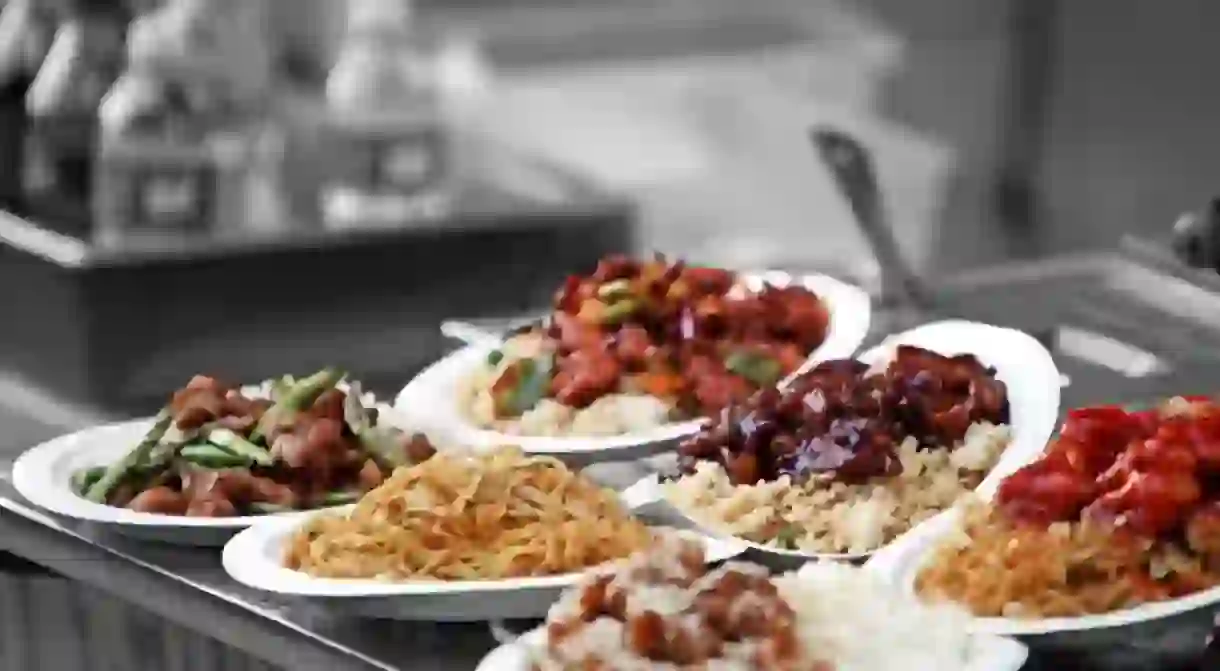11 "Chinese Foods" You Won't Find in China

It’s no secret that Chinese restaurants in the West have taken creative liberties with their recipes, sometimes varying them wildly from the authentic originals. There are also those “Chinese” dishes that have no resemblance to real Chinese food at all, though they often have a deep and fascinating history of their own. Here are just a few of the most common dishes westerners often believe to be authentic, but truly aren’t.
General Tso’s Chicken
Few westernized Chinese dishes are as ubiquitous as General Tso’s chicken. Yet, scour the whole of China for the dish, and you’ll likely be disappointed. Not only is it nearly completely absent in its alleged country of origin, it isn’t even based on a real Chinese dish. Although General Tso himself was an actual man, his namesake chicken is thought to have been created in the 1970s in New York. Some argue that it is based off a Hunanese recipe, but even so, the dish is too far removed from real Chinese food to draw conclusive similarities.

Fortune Cookies
Although this encouraging little confection has come to symbolize Chinese food in restaurants across North America, fortune cookies were invented in California by way of Japan. A Japanese snack called omikuji senbei, a rice cookie with a small fortune inside, inspired the original recipe. Unlike some other Western “Chinese food” staples, fortune cookies have yet to be adopted in any form in China.

Sesame Chicken
Similar to General Tso’s chicken, sesame chicken is made with a soy-based sauce, though it favors sweet notes rather than spicy. Sweetened soy sauce is actually used heavily in Shanghainese cooking, but a dish exactly like this is hard to come by in China.

Crab Rangoon
Leave it to the Americans to take Chinese wonton wrappers and fry them. Yes, wontons are a real Chinese dish, but this iteration is anything but.

Wonton Strips
Usually given out as a free appetizer at Chinese takeout restaurants, wonton strips are just another example of Americans frying the authenticity out of a dish.

Chinese Chicken Salad
Chinese cuisine is not big on salads, especially not of the lettuce-based variety. Typically made with some combination of lettuce, chicken, mandarin oranges, wonton strips, and cashews, this dish is American through and through.

Chop Suey
The poster child of westernized Chinese food, chop suey is a product of early Chinese immigration to America. The name of the dish is Cantonese for “assorted pieces” and is believed to have its roots in the Taishan province of Guangdong, the ancestral home of many these early immigrants. In fact, much of the West’s “Chinese food” is loosely based on Cantonese cuisine, one of dozens of authentic Chinese cooking styles.

Chicken Teriyaki
It is rather obvious that any dish with “teriyaki” in the name would be Japanese, not Chinese. Nevertheless, chicken teriyaki has become a classic Chinese dish at malls and takeout joints across North America.

Beef and Broccoli
Broccoli, as the west knows it, is foreign to China, where they use a leafier version of the vegetable. Beef is also somewhat rare in many parts of China, though the country is increasingly gaining an appetite for the expensive meat. Pork is more often the protein of choice for simple and cheap stir-fry dishes.

Moo Shu Pork
In a rare exception, moo shu pork actually does exist in China. However, it doesn’t look or taste like the dish westerners are used to. The westernized version forgoes the more exotic ingredients, such as wood ear fungus, and substitutes carrots and other more readily available vegetables. The real thing can be found in China’s northern Shandong province.

Sugar Doughnut
It is unclear why some variation of the sugar doughnut can be found at many Chinese buffets in the West. Chinese desserts are rarely so sugary, and doughnuts have yet to become popular in China.














